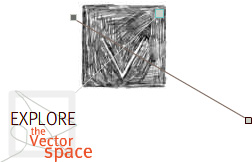Hypermedia Berlin
Cultural History in the Age of New Media, or "Is There a Text in this Class?"
Editor's Introduction
http://www.berlin.ucla.edu/hypermedia (Use this link to open Hypermedia Berlin before launching the Flash 'walkthrough' to the right.)
In his 1960 book The Image of the City, urban planner Kevin Lynch showed that a city-dweller's sense of alienation correlated with the degree to which he or she could - or could not - mentally navigate surrounding streets and neighborhoods. Further, he found that a city's "imageability," which is linked to the presence of legible and identifiable kinds of markers, contributes to a sense of familiarity and the acceptance of the city as a recognizable place. Todd Presner's Hypermedia Berlin extends Lynch's ideas through the creation of a series of layered maps of Berlin that not only chronicle the evolution and dissolution of the city's districts, architectural landmarks and boundaries through multiple chronologies, but that also reflect the city through diverging ideological lenses.
The project, designed to be shared with students and instructors internationally, offers a new form of scholarship in which "visitors" discover the city's multifaceted history through its sedimented terrain. Rather than moving through the histories traditionally arrayed in linear text, Hypermedia Berlin invites users to begin in the streets, parks and landmarks that constitute the city and then to move either up or down on a temporal axis almost decade by decade, or outward, from one place to another. Further, Presner views the project as a foundation upon which others will build with the goal of crafting a rich and culturally dense collaborative "hypertext encyclopedia."
Hypermedia Berlin is the result of a collaboration between UCLA's Center for Digital Humanities and Stanford University's Humanities Laboratory. Based on a series of interdisciplinary courses taught in Palo Alto, Los Angeles and Berlin, Hypermedia Berlin is designed specifically for use in classrooms, where it offers a multidimensional platform for a variety of applications and may serve as a model for investigating other urban spaces.



